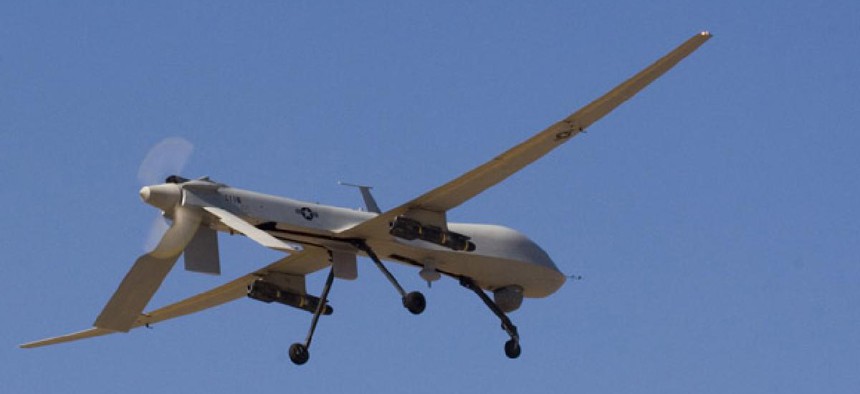Researchers use spoofing techniques to take control of drone

Air Force
Findings come as UAVs have been cleared for integration in U.S. airspace by 2015.
Researchers at the University of Texas at Austin have discovered a way to imitate global positioning system signals and dupe a drone into changing its course, the school announced.
The findings raise fears that terrorists could take control of unmanned aerial vehicles just as the Federal Aviation Administration cleared them for use in domestic airspace by 2015.
The engineers used $1,000 gear to overtake navigational signals going to a small GPS-guided surveillance drone and manipulated the aircraft from about a kilometer away. The demonstration was first reported by Fox News.
"We're raising the flag early on in this process so there is ample opportunity to improve the security of civilian drones from these attacks," Todd Humphreys, the aerospace engineering professor who led the research team, said in a statement.
He also presented techniques to detect such so-called spoofing attacks against cryptographically-protected GPS signals in military and non-military settings in a research paper.
The team is working on methods to hack an unmanned aircraft from a distance of 10 kilometers for a similar demonstration next year.
NEXT STORY: Mark Weatherford's major league cyber team





